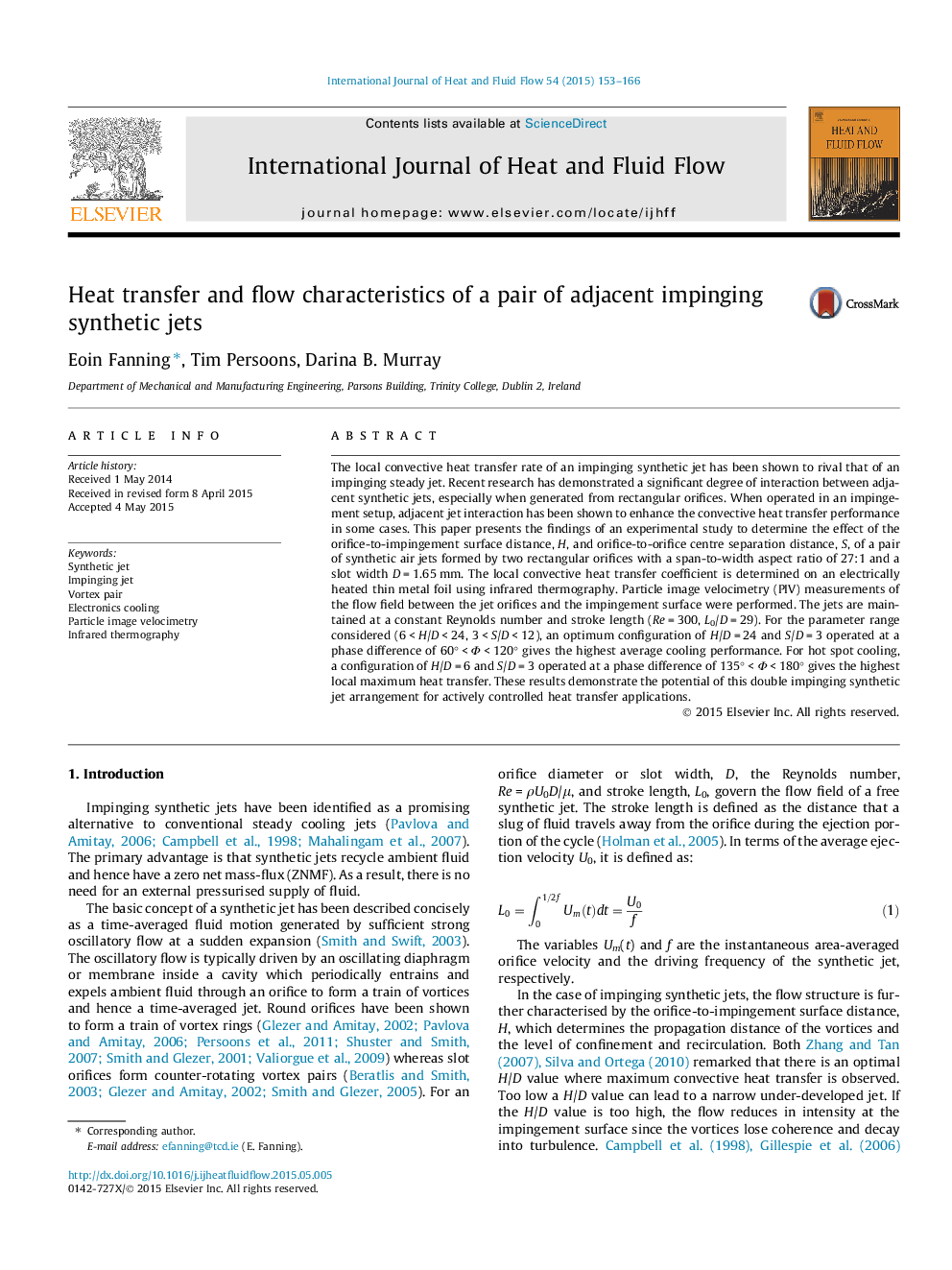| Article ID | Journal | Published Year | Pages | File Type |
|---|---|---|---|---|
| 655038 | International Journal of Heat and Fluid Flow | 2015 | 14 Pages |
Abstract
The local convective heat transfer rate of an impinging synthetic jet has been shown to rival that of an impinging steady jet. Recent research has demonstrated a significant degree of interaction between adjacent synthetic jets, especially when generated from rectangular orifices. When operated in an impingement setup, adjacent jet interaction has been shown to enhance the convective heat transfer performance in some cases. This paper presents the findings of an experimental study to determine the effect of the orifice-to-impingement surface distance, H, and orifice-to-orifice centre separation distance, S, of a pair of synthetic air jets formed by two rectangular orifices with a span-to-width aspect ratio of 27:1 and a slot width D = 1.65 mm. The local convective heat transfer coefficient is determined on an electrically heated thin metal foil using infrared thermography. Particle image velocimetry (PIV) measurements of the flow field between the jet orifices and the impingement surface were performed. The jets are maintained at a constant Reynolds number and stroke length (Re = 300, L0/D = 29). For the parameter range considered (6 < H/D < 24, 3 < S/D < 12), an optimum configuration of H/D = 24 and S/D = 3 operated at a phase difference of 60° < Φ < 120° gives the highest average cooling performance. For hot spot cooling, a configuration of H/D = 6 and S/D = 3 operated at a phase difference of 135° < Φ < 180° gives the highest local maximum heat transfer. These results demonstrate the potential of this double impinging synthetic jet arrangement for actively controlled heat transfer applications.
Keywords
Related Topics
Physical Sciences and Engineering
Chemical Engineering
Fluid Flow and Transfer Processes
Authors
Eoin Fanning, Tim Persoons, Darina B. Murray,
